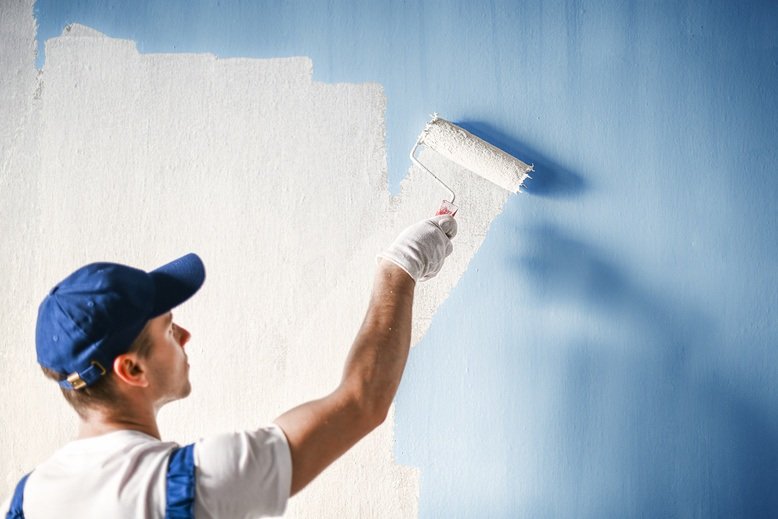What Is Included In Exterior House Painting?

Overview
When it comes to reviving the curb appeal of a home, few things can make as immediate and transformative an impact as a fresh coat of exterior paint.
In this blog, we will delve into the world of exterior painting Melbourne, exploring the myriad considerations and components involved in this makeover process. From surface preparation and primer selection to paint types and application techniques, we’ll unravel the essentials of a successful exterior paint job.
Whether you’re a DIY enthusiast or considering hiring professionals, this blog will equip you with the knowledge needed to understand what is included in exterior house painting and achieve stunning, long-lasting results.
Planning and Preparation
Choosing the right paint colour is a critical decision that can significantly impact the overall look of your home. Tips for selecting a colour that complements the architectural style and surroundings include considering the existing colours in your neighbourhood and the architectural features of your home. It’s important to ensure that the chosen colour harmonises with the overall aesthetic and doesn’t clash with the surroundings.
Surface preparation is a vital step in the painting process. Power washing, scraping, sanding, and repairing any damaged areas before painting is essential for achieving a long-lasting finish. Neglecting proper surface preparation can lead to paint failure and the need for premature repainting.
Selecting the right tools and materials is also crucial. Brushes, rollers, ladders, tarps, primers, and paints suitable for exterior surfaces should be carefully chosen to ensure the best results. Quality tools and materials can make the painting process more efficient and ensure a professional finish.

Step-by-Step Painting Process
A. Preparing the Surface
The first step in the painting process is cleaning and repairing the surface. This involves removing dirt, mildew, and loose paint, as well as addressing any cracks or holes. Proper surface preparation sets the foundation for a successful paint job.
Masking off areas not to be painted is another important step to ensure clean, sharp lines and protect surfaces that are not intended to be painted.
B. Priming
The importance of primer in ensuring adhesion and a long-lasting finish cannot be overstated. Primer creates a uniform surface for the paint to adhere to, seals porous surfaces, and provides added protection.
Different types of primers are available for various surfaces, and selecting the right primer is crucial for the success of the paint job.
C. Painting Techniques
Choosing the right application method is essential for achieving a smooth, even finish. Understanding the pros and cons of brush, roller, and sprayer applications is important, as each method has its advantages depending on the surface and desired outcome.
Proper application methods, such as maintaining a wet edge and avoiding overworking the paint, are key to achieving professional results.
D. Finishing Touches
After the exterior painting Melbourne is complete, proper clean-up of brushes, rollers, and other equipment is necessary to prolong their lifespan and ensure they are ready for future use.
Removing masking tape carefully and inspecting the finished job for any touch-ups or corrections is the final step in the painting process.
Best Practices for Weather Conditions
Scheduling the painting project around weather patterns is crucial. Factors such as temperature, humidity, and precipitation can impact the paint’s adhesion and drying time. Painting during optimal weather conditions can ensure the best results and prevent potential issues.
Environmental Considerations
In today’s environmentally conscious world, using eco-friendly paints and properly disposing of paint-related waste are important considerations. Many paint manufacturers offer low-VOC (volatile organic compounds) and environmentally friendly options that minimise the impact on the environment.
Maintaining the Painted Exterior
Once the exterior of your home has been painted, regular maintenance is key to extending the life of the paint job. This includes cleaning the surface, addressing any issues promptly, and periodically inspecting the paint for signs of wear or damage.
Conclusion
Exterior house painting is a significant investment in your home’s aesthetic appeal and protection. By following the steps outlined in this guide and considering the best practices for colour selection, preparation, painting techniques, weather conditions, environmental considerations, and maintenance, you can take on your exterior painting Melbourne project with confidence.
A well-executed paint job can transform your home and provide long-lasting benefits for years to come.
Related Posts

What to Expect When Working with Expert Interior House Painters?

How Much Do Painters Charge for Interior Painting?

